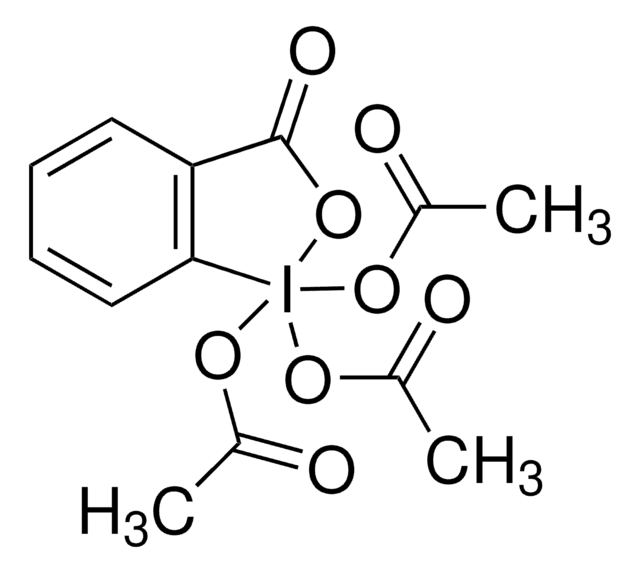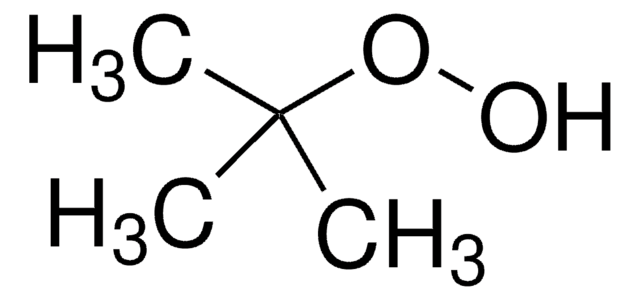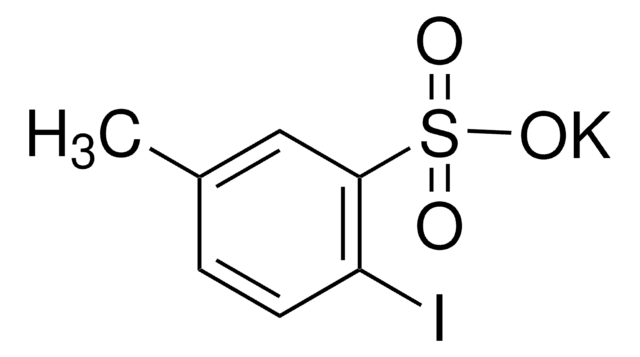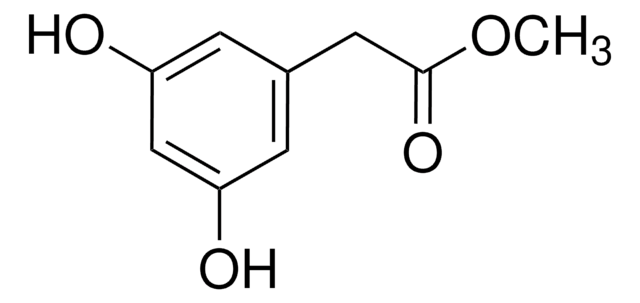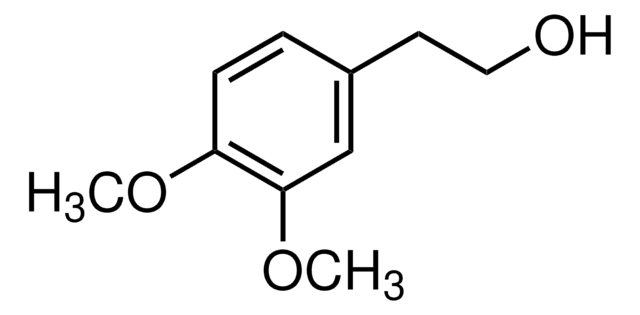274623
Dess-Martin periodinane
97%
Synonym(s):
1,1,1-Tris(acetyloxy)-1,1-dihydro-1,2-benziodoxol-3-(1H)-one
About This Item
Recommended Products
Quality Level
assay
97%
reaction suitability
reagent type: oxidant
mp
130-133 °C (lit.)
storage temp.
−20°C
SMILES string
CC(=O)OI1(OC(C)=O)(OC(C)=O)OC(=O)c2ccccc12
InChI
1S/C13H13IO8/c1-8(15)19-14(20-9(2)16,21-10(3)17)12-7-5-4-6-11(12)13(18)22-14/h4-7H,1-3H3
InChI key
NKLCNNUWBJBICK-UHFFFAOYSA-N
General description
Application
- For 1° and 2° alcohols to aldehydes and ketones.
- In the synthesis of N-protected α-amino aldehydes from the corresponding N-protected β-amino alcohols.
- To synthesize alkynyl oxoaldehyde probe (AlkMGO).
Features and Benefits
- milder reaction conditions (room temperature, neutral pH)
- shorter reaction times and higher yields
- high chemoselectivity
- tolerance of sensitive functional groups, and a long shelf life
- simplified workups
signalword
Danger
hcodes
Hazard Classifications
Eye Irrit. 2 - Self-react. C - Skin Irrit. 2 - STOT SE 3
target_organs
Respiratory system
supp_hazards
Storage Class
5.2 - Organic peroxides and self-reacting hazardous materials
wgk_germany
WGK 3
flash_point_f
Not applicable
flash_point_c
Not applicable
ppe
dust mask type N95 (US), Eyeshields, Gloves
Choose from one of the most recent versions:
Already Own This Product?
Find documentation for the products that you have recently purchased in the Document Library.
Customers Also Viewed
Our team of scientists has experience in all areas of research including Life Science, Material Science, Chemical Synthesis, Chromatography, Analytical and many others.
Contact Technical Service